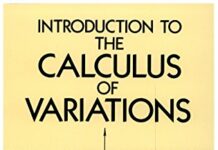
Ebook Info
- Published: 1989
- Number of pages: 399 pages
- Format: PDF
- File Size: 20.89 MB
- Authors: Hans Sagan
Description
This well-known text uses a limited number of basic concepts and techniques — Hamilton’s principle, the theory of the first variation and Bernoulli’s separation method — to develop complete solutions to linear boundary value problems associated with second order partial differential equations such as the problems of the vibrating string, the vibrating membrane, and heat conduction. It is directed to advanced undergraduate and beginning graduate students in mathematics, applied mathematics, physics, and engineering who have completed a course in advanced calculus. In the first three chapters, Professor Sagan introduces Hamilton’s principle and the theory of the first variation; he then discusses the representation of the vibrating string, the vibrating membrane and heat conduction (without convection) by partial differential equations. Bernoulli’s separation method and infinite series solutions of homogeneous boundary value problems are introduced as a means for solving these problems. The next three chapters take up Fourier series, self-adjoint boundary value problems, Legendre polynomials, and Bessel functions. The concluding three chapters address the characterization of eigenvalues by a variational principle; spherical harmonics, and the solution of the Schroedinger equation for the hydrogen atom; and the nonhomogeneous boundary value problem. Professor Sagan concludes most sections of this excellent text with selected problems (solutions provided for even-numbered problems) to reinforce the reader’s grasp of the theories and techniques presented.
User’s Reviews
Reviews from Amazon users which were colected at the time this book was published on the website:
⭐Thank you for the super fast delivery, and the book is exactly as advertised.May God richly bless your family business.
⭐I bought Sagan’s book while a senior, and used it for a text while a second year professional and a third year graduate student in mathematics. The course led to a series of courses in theoretical mechanics, and untimately, a doctorate in control theory. The course taught from this book, and the following course in mechanics provided a strong foundation for a career. I continue to have my students read Sagan’s book.
⭐The problem with books on mathematical methods for physics is that they look more like a collection of recipes than like a coherent text. This was not true of the older classics, like Sommerfeld’s “Partial Differential Equations of Physics”. Fortunately, there is this beautiful book by Hans Sagan, now on Dover catalogue, to follow that tradition. A highlight is his treatment of the Sturm-Liouville problem. Having previously introduced variational methods, he shows that there is a “Lagrangian” whose “Euler-Lagrange equations” are just the Sturm-Liouville equations. In so doing, he has all the arsenal of approximation methods of variational calculus at his disposal to apply in the so-called special functions. As a beautiful example he estimates the position of the zeros of Bessel functions. The reader will find many other mathematical gems in this fine text.
⭐This text includes material usually covered in mathematical physics courses, but its approach is somewhat different, and better, than most of the classics. The point is that the author felt not content with just explaining how to employ the most common mathematical methods to solve physical problems. He, on one hand, presents full motivation from the physical point of view, while on the other hand keeping high-level mathematical rigor. Believe me: this is not usual in mathematical physics books. By doing so, the author has produced a text valuable for both physicists and mathematicians.Its contents are: Hamilton’s principle and the theory of the first variation, representation of some physical phenomena by partial differential equations, theorems related to partial differential equations and their solutions, fourier series, self-adjoint boundary value problems, Legendre polynomials and Bessel functions, characterization of eigenvalues by a variational principle, spherical harmonics, the nonhomogeneous boundary value problem.Includes excercises for most sections and references for each chapter. Suitable for third year undergraduates and on.
⭐This is a beautifully written book! This is a great place to start and perhaps end one’s study of boundary and eigenvalue problems. The first chapter even provides one of the best treatments of first variation I have seen in print. The vibrating string, heat conduction, PDEs, Fourier series,special functions, self-adjoint operators, it is all there and written in an easy to understand format. Some may find the notation a little dated but that is little price to pay for such a treasure of knowledge. Read and enjoy.
⭐Another great book by Hans Sagan.
⭐Para os amantes de física-matemática.
⭐
Keywords
Free Download Boundary and Eigenvalue Problems in Mathematical Physics (Dover Books on Physics) in PDF format
Boundary and Eigenvalue Problems in Mathematical Physics (Dover Books on Physics) PDF Free Download
Download Boundary and Eigenvalue Problems in Mathematical Physics (Dover Books on Physics) 1989 PDF Free
Boundary and Eigenvalue Problems in Mathematical Physics (Dover Books on Physics) 1989 PDF Free Download
Download Boundary and Eigenvalue Problems in Mathematical Physics (Dover Books on Physics) PDF
Free Download Ebook Boundary and Eigenvalue Problems in Mathematical Physics (Dover Books on Physics)



